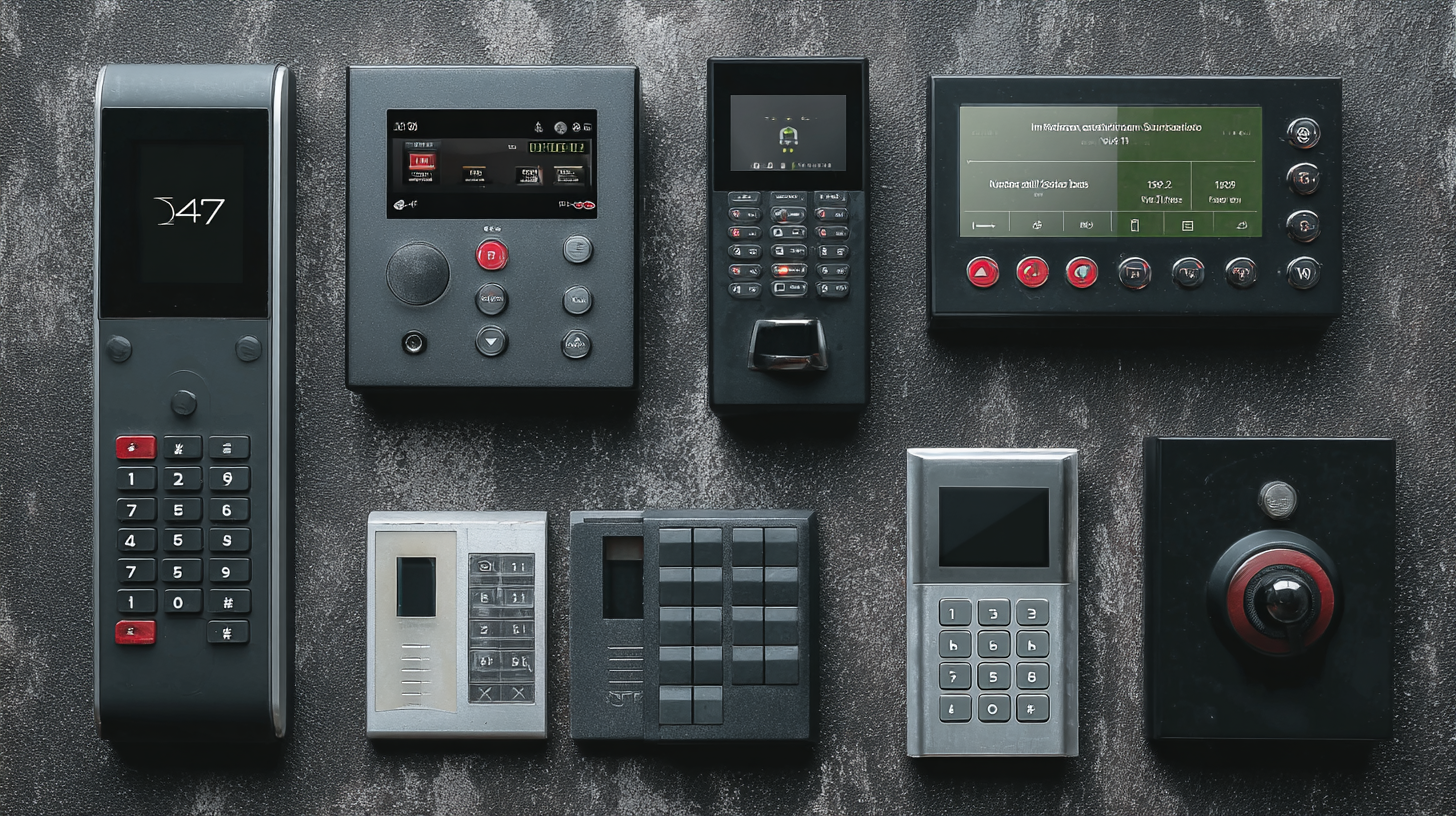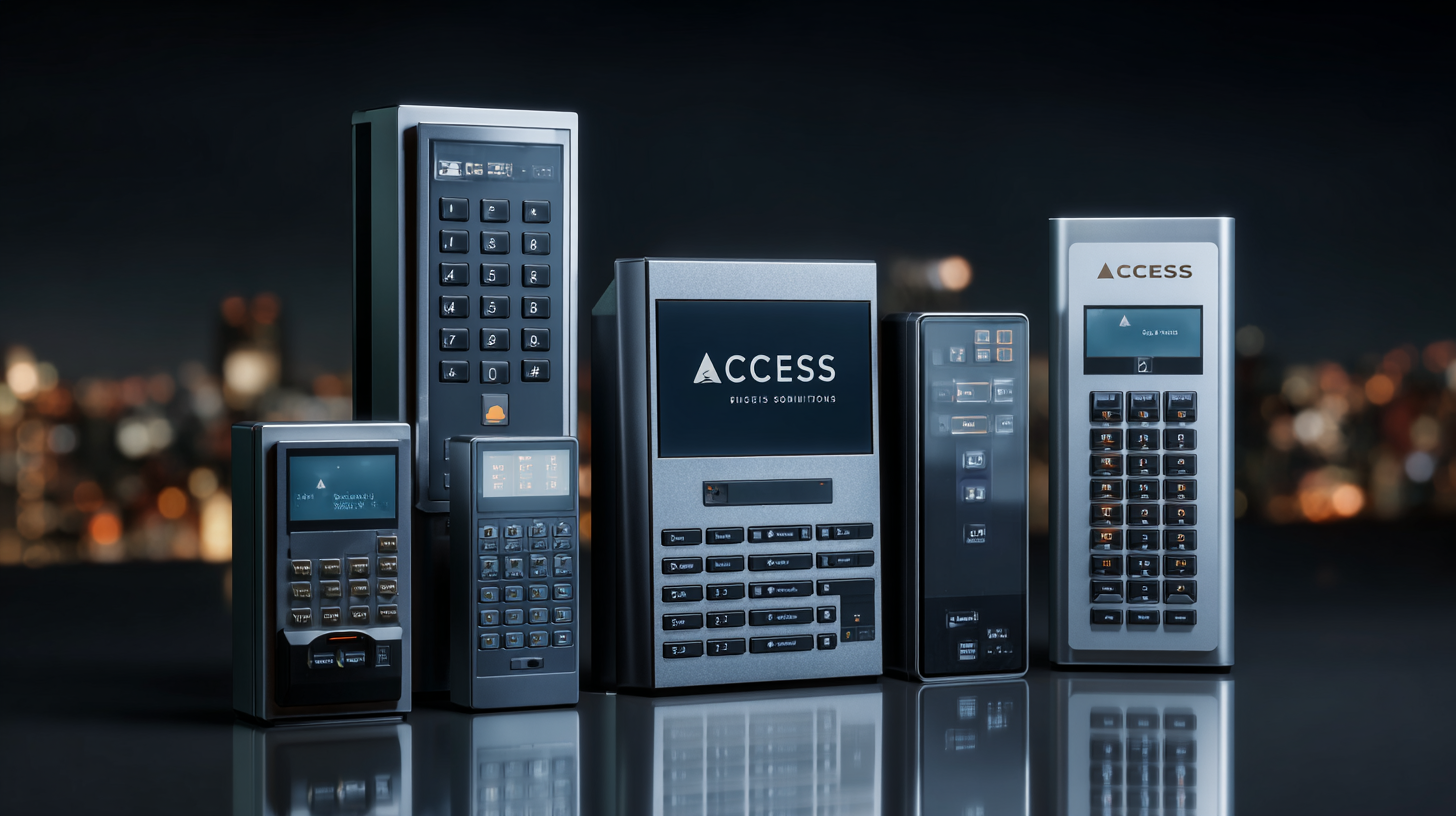Digital Innovations in Best Access Control Security Solutions
In today's rapidly evolving digital landscape, the importance of robust Access Control Security solutions has surged, with a projected global market growth of 10.4% from 2023 to 2030, according to a recent report by Grand View Research. As organizations increasingly embrace technology to enhance their security measures, digital innovations are now at the forefront of effective access management. Advanced systems incorporating artificial intelligence, biometrics, and IoT integration not only bolster security but also streamline operations, providing real-time monitoring and analytics. This transformative shift highlights the need for businesses to adopt cutting-edge technologies that address contemporary threats while ensuring compliance with stringent regulatory standards. As we explore the latest trends and tips for optimizing access control security, it becomes clear that staying ahead of technological advancements is essential for maintaining the integrity of sensitive information and assets.

Transforming Access Control: The Impact of Digital Innovations
 Digital innovations are revolutionizing access control systems, providing enhanced security and convenience across various sectors. Traditional access methods, such as keys and keycards, are becoming obsolete as digital solutions, including biometric recognition and mobile access apps, gain popularity. These technologies not only improve security by ensuring that only authorized personnel gain entry but also streamline the process, reducing the time and effort involved in accessing restricted areas.
Digital innovations are revolutionizing access control systems, providing enhanced security and convenience across various sectors. Traditional access methods, such as keys and keycards, are becoming obsolete as digital solutions, including biometric recognition and mobile access apps, gain popularity. These technologies not only improve security by ensuring that only authorized personnel gain entry but also streamline the process, reducing the time and effort involved in accessing restricted areas.
Moreover, the integration of Internet of Things (IoT) devices within access control systems allows for real-time monitoring and management. Security personnel can receive immediate alerts regarding unauthorized access attempts and track usage patterns for more informed security decisions. These advancements are particularly beneficial in environments requiring high security, such as corporate offices and sensitive facilities. By leveraging digital innovations, organizations can create a safer and more efficient access control environment, aligning with the demands of a rapidly changing technological landscape.
Smart Technologies Revolutionizing Security Solutions in Access Control
In today's rapidly advancing technological landscape, smart technologies are redefining the way we approach access control security solutions. These innovations provide comprehensive systems that enhance safety while offering convenience and efficiency. Biometric identification, for instance, utilizes unique individual traits such as fingerprints and facial recognition to ensure that only authorized users can access secure areas, making traditional locks and keys obsolete.
When adopting these modern solutions, consider incorporating multi-factor authentication for an extra layer of security. This can include a combination of biometric verification and mobile app notifications, ensuring that access is granted only when all criteria are met. Additionally, invest in cloud-based access control systems that allow for real-time monitoring and scalability, catering to both small businesses and large enterprises alike.
It’s also essential to regularly update your access control systems and educate your team about the latest security technologies. Providing training sessions will help employees understand how to use these smart solutions effectively while being aware of potential security threats. With the right combination of technology and training, organizations can create a secure environment that adapts to evolving security challenges.
Seamless Integration: Merging Physical and Digital Access Control Systems
The integration of physical and digital access control systems has become a pivotal focus in enhancing security solutions. Traditionally, these systems operated in silos, resulting in inefficiencies and potential vulnerabilities. However, with the advent of digital innovations, organizations can now merge their physical security measures, such as card readers and biometric scanners, with advanced digital platforms that manage access permissions and monitor activity in real-time. This seamless integration not only streams security protocols but also improves responsiveness to security incidents.
Moreover, the convergence of these systems facilitates a more comprehensive approach to risk management. By utilizing analytics and data from both physical and digital systems, organizations can gain deeper insights into access patterns, identify anomalies, and optimize their security strategies accordingly. For instance, integrating facial recognition technology with digital access logs can provide a powerful deterrent against unauthorized access while enhancing user convenience.
In essence, the melding of physical and digital access control systems not only fortifies security measures but also enhances overall operational efficiency, creating a more secure environment for businesses and their stakeholders.
The Role of AI and Machine Learning in Enhancing Security Protocols
The integration of artificial intelligence (AI) and machine learning into access control security solutions is revolutionizing how organizations safeguard their assets. These technologies empower security systems to analyze vast amounts of data in real-time, enabling more sophisticated threat detection and response capabilities. By identifying patterns and anomalies in user behavior, AI-driven systems can flag potential security breaches before they occur, significantly enhancing the overall security posture.
Machine learning algorithms continually evolve by learning from historical data, allowing access control systems to adapt to new threats autonomously. This adaptive capability reduces reliance on manual updates and human oversight, often prone to delays and errors. Moreover, AI can improve user verification processes through biometric recognition, ensuring that only authorized personnel gain access to sensitive areas. As these innovations become more prevalent, they not only streamline security protocols but also instill greater confidence among stakeholders in the efficacy of their security measures.
Future Trends in Digital Access Control: What to Expect in the Coming Years
The landscape of access control security is rapidly evolving, driven by digital innovations that enhance protection while improving user experience. One notable trend is the increasing integration of biometrics into access control systems.
 Fingerprint scanning, facial recognition, and iris scanning are not only more secure but also offer a frictionless experience for users. As technology advances, these biometric systems are likely to become more sophisticated, integrating artificial intelligence to adapt and learn from usage patterns, ensuring that security measures remain one step ahead of potential threats.
Fingerprint scanning, facial recognition, and iris scanning are not only more secure but also offer a frictionless experience for users. As technology advances, these biometric systems are likely to become more sophisticated, integrating artificial intelligence to adapt and learn from usage patterns, ensuring that security measures remain one step ahead of potential threats.
Another significant trend on the horizon is the rise of mobile access control solutions. With the proliferation of smartphones, many security systems are now enabling users to manage access rights via mobile applications. This not only fosters convenience but also enhances security through features like remote access management. In the coming years, we can expect an increase in the use of digital IDs and mobile credentials, allowing organizations to streamline the access process while reducing the need for physical cards. This shift away from traditional access methods will likely redefine how we think about security in both residential and commercial spaces.
- • HighpowerOne Touchscreen Controller • HighpowerOne Mobile Credential App
- Highpower Management System
- • Pushplate 100 PNZ
- • Pushplate 110 PNZ
- • Pushplate 120/140 PNZ
- • Pushplate 130/150 PNZ
- • Pushplate 200 PNZ
- • Pushplate 100
- • Pushplate 110
- • Pushplate 120/140
- • Pushplate 130/150
- • Pushplate 200
Mechanical Timers
Proximity ID Access Cards and Fobs
Proximity Card Readers
- • Proximity Reader P-300
- • Proximity Reader P-400
- • Proximity Reader P-500
- • Proximity Reader P-620
- • Proximity Reader P-640
- • Proximity Reader P-710
- • Proximity Reader P-900
- • Ranger Proximity Readers
- • Ranger Controls
- • Sure-Fi Wireless Interfaces
Smart Series JX Readers
Electromagnetic Locks
Highpower Power Supplies
• H505
• H512
Security Products Summary
